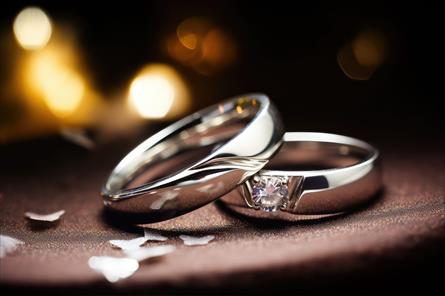The Value of Vintage Platinum Rings
Platinum rings have long been a symbol of elegance and durability. These precious metal rings, often associated with special occasions like engagements and anniversaries, can hold significant sentimental value. But what about their monetary value? Are old platinum rings worth anything? Even if their collections contain mostly gold bars or silver bullion, San Diego precious metals collectors might be interested in learning about the following factors that determine the value of vintage platinum rings and getting some insights into how to evaluate and sell them effectively.
Understanding Platinum: A Precious Metal
Platinum is one of the rarest and most valuable precious metals in the world. Known for its durability and resistance to tarnish, it’s a popular choice for fine jewelry. Platinum’s density and weight give it a substantial feel, and its natural white luster makes it an ideal setting for gemstones. Unlike gold, which can be alloyed to different colors, platinum’s color remains constant, enhancing its appeal.
Factors Influencing the Value of Old Platinum Rings
Several factors determine the worth of an old platinum ring. Understanding these can help you better assess your jewelry’s value:
- Purity of platinum – Platinum jewelry is typically marked with a purity stamp, such as “950,” indicating 95 percent pure platinum. Higher purity generally translates to higher value.
- Weight of the ring – Platinum is a dense metal, and the weight of the ring can significantly influence its value. Heavier rings contain more platinum, which increases their worth.
- Condition and wear – The condition of the ring plays a crucial role. Rings that are well maintained and show minimal wear and tear are more valuable than those with scratches or damage.
- Design and craftsmanship – Intricate designs and high-quality craftsmanship can add significant value. Rings from renowned designers or jewelers can be particularly valuable.
- Gemstones and other materials – The presence of gemstones such as diamonds, sapphires, or emeralds can enhance the ring’s value. The quality, size, and cut of these stones are important factors.
- Historical and sentimental value – Rings with historical significance or compelling provenance stories can attract collectors and command higher prices. Pieces from eras such as the Edwardian, Victorian, and Art Deco periods can fetch higher prices due to their rarity and historical context. Sentimental value, while not quantifiable in monetary terms, can also influence the perceived worth.
Evaluating the Value of Your Platinum Ring
Evaluating an old platinum ring involves a combination of self-assessment and professional appraisal. Here’s a step-by-step guide to help you get started:
- Identify and inspect hallmarks – Look for hallmarks or stamps inside the ring band that indicate the purity and manufacturer. Common marks for platinum include “PT950” or “PLAT.”
- Weigh the ring – Use a jewelry scale to determine the weight of the ring. The heavier the ring, the more platinum it contains, which can increase its value.
- Examine the condition – Inspect the ring for any signs of wear, damage, or repairs. A well-maintained ring is more valuable than one in poor condition.
- Assess the gemstones – Evaluate the quality and size of any gemstones. Consider consulting a gemologist for an accurate assessment.
- Research comparable sales – Look for similar rings on auction sites or through jewelry retailers to gauge market trends and prices.
- Get a professional appraisal – For an accurate valuation, consider having your ring appraised by a certified jeweler or gemologist. This individual can provide a detailed report on the ring’s value based on its characteristics and current market conditions.
Selling Your Platinum Ring
Once you’ve evaluated your ring, you may decide to sell it. Here are some options and tips for getting the best price:
- Jewelry stores and dealers – Local jewelry stores and dealers often buy vintage jewelry. They can offer immediate payment, though the price may be lower than market value.
- Online marketplaces – Selling through online platforms like eBay, Etsy, or specialized jewelry sites can reach a broader audience. Make sure to provide detailed descriptions and high-quality photos.
- Auctions – Auctions, whether online or in person, can attract collectors willing to pay a premium for unique or high-quality pieces.
- Consignment – Consignment shops or online consignment services will sell your ring for you, taking a commission on the sale. This can be a good option if you’re willing to wait for the right buyer.
- Private sales – Selling to individuals, either through classified ads or word of mouth, can sometimes yield higher prices, though it requires more effort and negotiation.
Vintage platinum rings can indeed be valuable. Their worth is not solely based on the current price of platinum but also on a variety of factors that make each piece unique. If you own an old platinum ring, consider having it appraised. It might hold more than just sentimental value—it could be a small piece of history with a value that has withstood the passage of time.
Platinum can be a fantastic part of any precious metals collection, and you can trust you’ll get what you pay for when you buy platinum from a reputable firm such as First National Bullion. San Diego residents can rely on our professionalism and expertise when they’re ready to invest in platinum, gold, and other precious metals. Give one of our experienced dealers a call today.
The statements made in this blog are opinions, and past performance is not indicative of future returns. Precious metals, like all investments, carry risk. Precious metals and coins may appreciate, depreciate, or stay the same in cash value depending on a variety of factors. First National Bullion does not guarantee, and its website and employees make no representation, that any metals for sale will appreciate sufficiently to earn the customers a profit. The decision to buy, sell, or borrow precious metals and which precious metals to purchase, borrow, or sell are made at the customer’s sole discretion.


